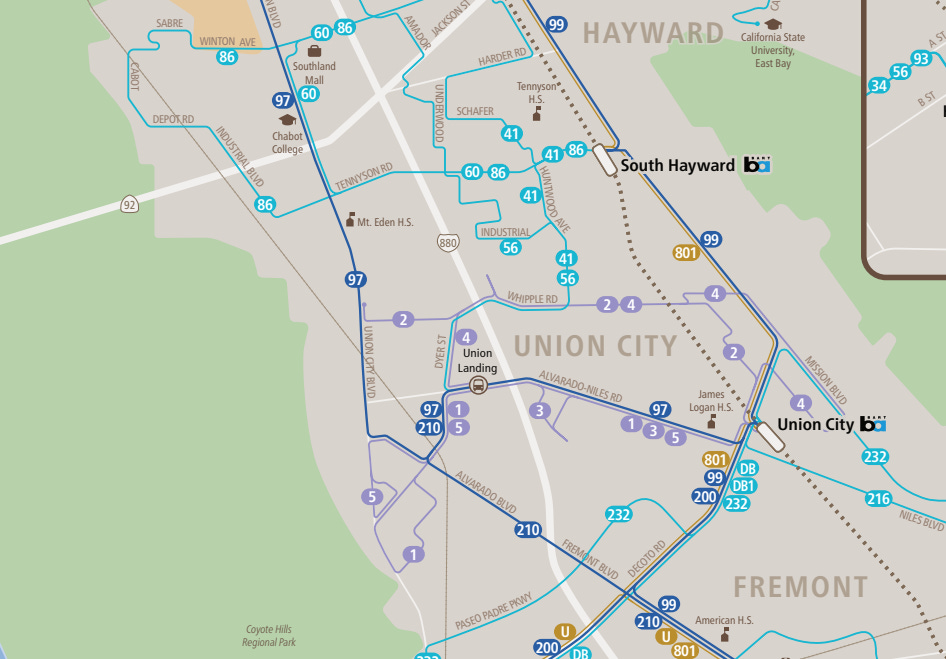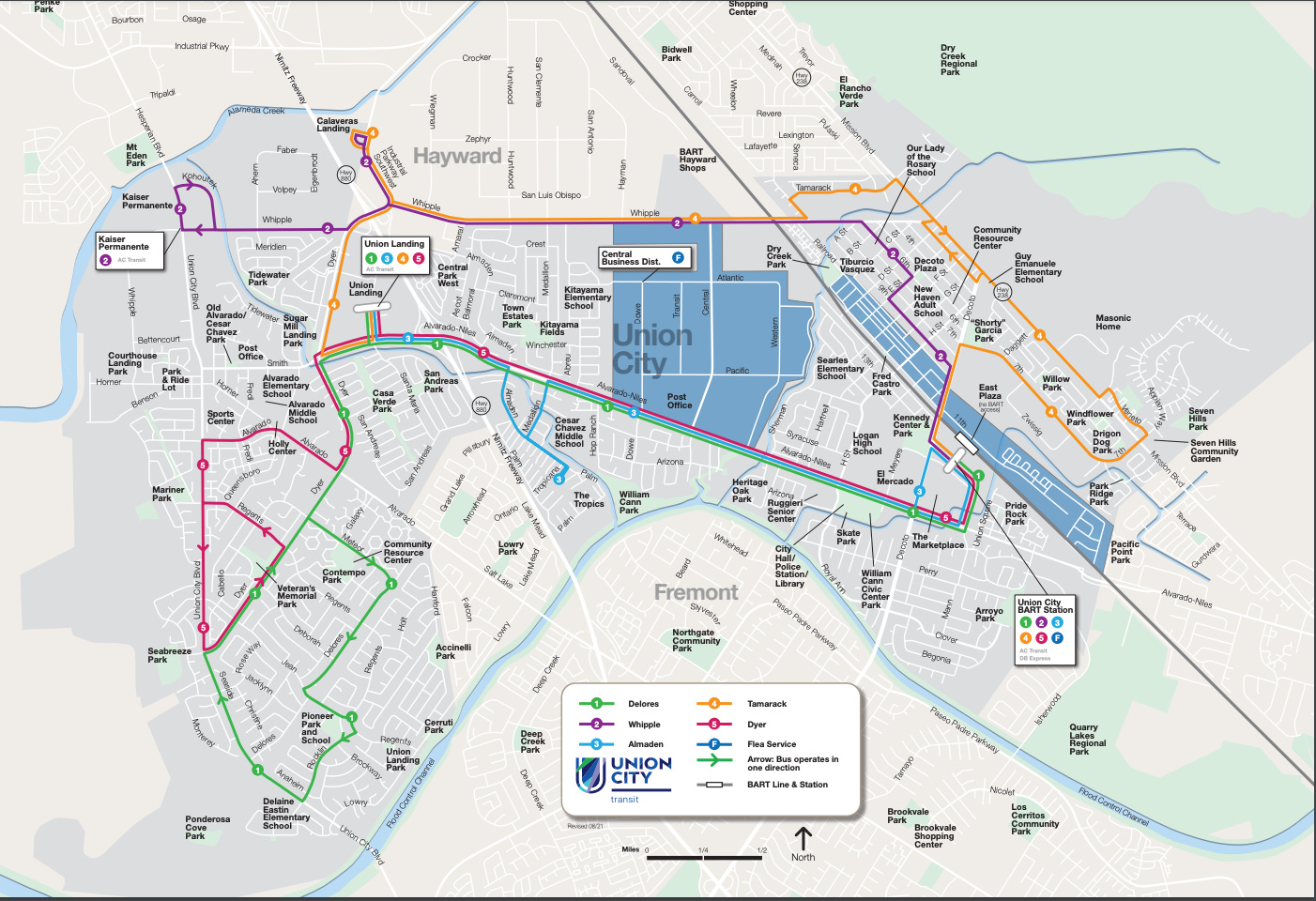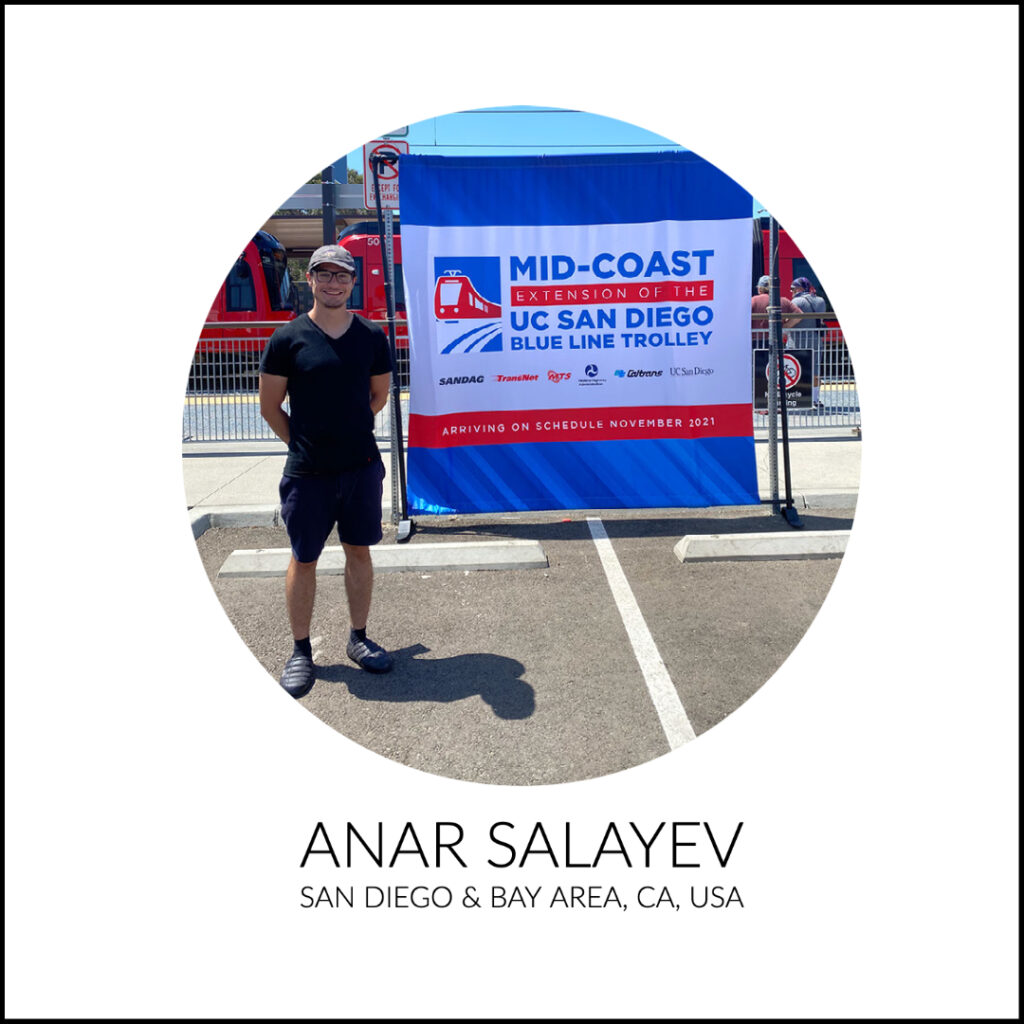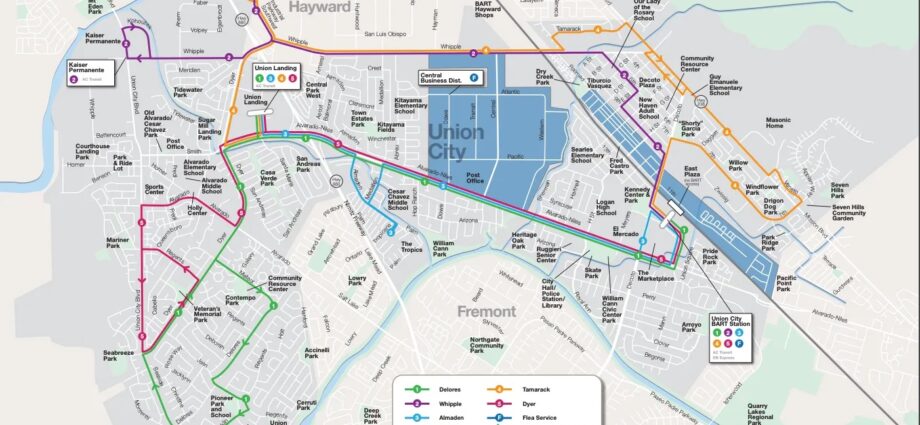By Anar Salayev
I grew up in a small Bay Area suburb called Union City. Near the southeastern tip of the BART network, Union City is a town of 68,000 situated between Hayward and Fremont. Despite being such a small town, it’s served by multiple transit agencies: AC Transit, BART, and UC Transit. This unusually robust transit system opened up an entire world for me and my friends to explore, not only in our hometown but in the greater region.
I am extremely grateful to have had access to a robust, interconnected, and (somewhat) reliable transit system. It made for a much richer childhood, one that doesn’t just consist of fuzzy memories inside our home, waiting for my parents to take me somewhere. It allowed for me to develop an intimate relationship with my hometown, not one from the backseat of a car, but one that was under my feet and in the palms of my hands.
Anar Salayev
The house my parents lived in at the time was served by the 1 (UC Transit System Map), which provides a one-seat ride to the local hub (Union Landing), James Logan High School, and the Union City BART station. This was a quick and easy way to get to Union Landing where we could catch a movie, get food, or just loiter around some of the big box stores. We quickly realized that the 4 can get us to Dry Creek Regional Park along Mission Boulevard and there was a connection to the 2, which allowed us to explore Union City’s industrial districts and get to a Costco in neighboring Hayward. If we wanted to go a little bit further, we could take the 97 (AC Transit) to get to Bay Fair Mall, San Leandro or the 232 (AC Transit) to get to NewPark Mall, Newark. Eventually, we were confident enough to take BART on our own, which could get us from our suburban townhouse to downtown San Francisco in an hour and a half.

As a teenager, I wasn’t doing this because of transit’s environmental benefits or because I was interested in transit infrastructure – I was doing it because I didn’t have my license and quickly realized that buses and trains can get me to where I need to be. This not only relieved my dependence on my parents’ vehicle, but also significantly boosted my self-confidence and ability to navigate risk. Beyond the benefits on my psyche, I believe that these positive experiences encouraged me to use transit well after getting my license.
I know a lot more about transit systems today. I have a greater appreciation of different riders’ points of views and frustrations when it comes to the transit experience. I knew then but especially know now how much more convenient it is to drive to a destination in most of North America (for example, that trip to NewPark Mall takes about an hour on transit but only 15 minutes to drive). A major privilege I had at that time was that I wasn’t in a hurry – I had all the time in the world (or, until “the street lights came on”), so pathetic headways, terrible on-time performance, and inefficient connections were never really top of mind. I was also a teenage boy, so safety (lighting, cameras, covered bus stops) was rarely a consideration.

These problems became more evident when I became dependent on transit to get to school, an internship, or work. These trips required proactive planning and the willingness to accept that I’d be late if one of those buses were late or just didn’t show up. I saw the shortcomings of North American transit when I studied abroad in Germany and took trains across Western and Northern Europe.
This unusually robust transit system opened up an entire world for me and my friends to explore, not only in our hometown but in the greater region.
Anar Salayev
Nonetheless, I am extremely grateful to have had access to a robust, interconnected, and (somewhat) reliable transit system. It made for a much richer childhood, one that doesn’t just consist of fuzzy memories inside our home, waiting for my parents to take me somewhere. It allowed for me to develop an intimate relationship with my hometown, not one from the backseat of a car, but one that was under my feet and in the palms of my hands. And it allowed for me get in trouble, get hurt, get lost, and have fun in ways that would not have been possible otherwise.
Not only is transit good for the environment, it’s great for every unlicensed individual that needs to get somewhere. I hope that teenagers today and in the future can experience their worlds like I had the good fortune to thanks to UC Transit.

Anar is a car-enthusiast turned walkability advocate. He seeks a holistic understanding of the built environment. He believes that human-centric urban design will go a long way in combatting climate change, encouraging sustainable practices, and improving health outcomes – both mental and physical.
Read San Diego and Bay Area Correspondent Anar’s content here
Read more about the Global Walkability Correspondents Network here

